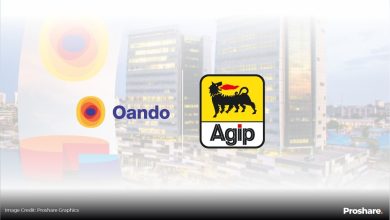Nestle Nigeria’s H1 2021 Result: Coping with Rising Revenue Scarred by Growing Debt

Nestle Nigeria witnessed its H1 2021 net earnings take a slight knock as the company coped with a one-third of a hundred per cent rise in its cost of goods sold. Rising input prices and more significant supply chain disruptions due to farm belt insecurity have put a headlock on the company’s operating earnings. The food beverage manufacturer saw its input costs rise by 31% between January and June 2021.
On the bright side, its net sales revenue rose by a fifth or 21. But this was swallowed up by a 260% rise in its finance costs and a 6% drop in its finance income. Analysts observe that there are signs that the company has stumbled into a widening debt hole which represents an over 700% rise in the corporate debt size year on year (Y-o-Y). The spike in the company’s debt will continue to squeeze profitability if the management does not find ways to roll back its short-term commercial borrowings.
The Bittersweet of Debt and liquidity
As noted earlier, the baby food manufacturer is in a debt trap that suggests a corporate liquidity crunch. The company’s current ratio (a measure of operating liquidity or cash availability) is roughly 1 compared to the preferred analytical ratio of 2. The preferred ratio would mean that for every one Naira of short-term liabilities, the manufacturer had N2 in near-term cash assets available to pay off short-term loans and advances.
While the ratio of 1 is considered manageable by some corporate analysts, others believe that it cuts the debt service capacity of the beverage maker to the bone. Investors of the company may require that Nestle’s management take a more critical look at the manufacturer’s liquidity tightness. The options open to the company would appear to be to raise equity to improve the company’s debt-to-equity ratio or to propose conversion of part of the current debt outstanding into fresh equity by way of a convertible debt issue. Analysts have said that the company should do this at a prospective interest rate lower than the company’s current average cost of debt. The move could reduce its weighted average cost of capital and improve share valuation.
Analysts further note that the devaluation of the domestic currency in the year and rising headline inflation rate have equally conspired to affect Nestle’s H1 2021 earning numbers adversely.
Key Highlights
- Profit before tax (PBT) declined marginally by -1.43% to N33.38bn in H1 2021.
- Revenue grew by +21.57% to N171.44bn in H1 2021 from N141.03bn in H1 2020.
- Cost of sales was +30.95% higher at N105.01bn in H1 2021 compared to H1 2020 figures.
- Finance cost rose Y-o-Y by +262.15% to N3.39bn in H1 2021.
- Finance income declined by -5.81% to N444.62mn in H1 2021.
- The total assets of the company grew by +35.77% to N262.79bn in H1 2021.
- Total debt rose by +787.13% to N51.91bn in H1 2021.
- Earnings Per Share dipped by -0.40% to N27.42 in H1 2021.
Share price movement-Looking Down with Hope
The share price of Nestle Nigeria was N1,505 in January 2021 before it slipped to N1,450 in February and then sunk marginally by -6.9% to N1,350 in March. Between March and June, the share price stayed below N1,420. However, it grew by +10% in July to N1,540. The year-to-date (YTD) share price movement has increased by +2.33% to N1,540 as of August 2 2021. The volatility in share price during the period was associated with corporate disclosures by the company and investor sentiment towards the stock (see chart 1 below).
Revenue-The Ups and Downs of Business
The company’s revenue has looked upwards between H1 2017 and H1 2020. It recorded a brief decline in H1 2020 but recovered in H1 2021 as revenue rose by +21.57% between H1 2020 and H1 2021. The notable rise in revenue was driven by a +22.58% increase in the value of goods sold in Nigeria compared to a fall of -25.9% in export earnings in H1 2021(see chart 2 below).
Profit Before Tax- A Dip and A Scare
In H1 2021, Nestle Nigeria’s PBT contracted slightly year-on-year (Y-o-Y) by -1.43% to N33.38bn despite the +9.1% increase in its gross margin; this was likely due to the +262.15% spike in finance cost.
The profit before tax of Nestle Nigeria has grown by +36.47% between H1 2017 and H1 2021. The company went from recording a +30.31% surge in PBT in H1 2018 and a +26.87% increase in H1 2019. The past rise fell by -16.26% in H1 2020 due to a Coronvirus-induced recession (see chart 3 below).
Current ratio-The Liquidity Chokehold
Nestle Nigeria’s current ratio has steadily declined from +0.86 in H1 2019 to +0.79 in H1 2020. Nevertheless, the company’s ratio improved to +1.01 H1 2021, indicating that it was still swimming in shallow liquidity waters. The company’s weak liquidity is becoming an increasingly important consideration. Indeed, market analysts note that it speaks to the challenge of corporate sustainability in an environment of high inflation rates and rising input costs with falling consumer disposable incomes
Quick Ratio
Analysts note Nestle’s stiffer liquidity or acid test ratio slumped in two consecutive quarters in H1 2019 and H1 2020 to +0.62 and +0.48, respectively. The relatively higher quick ratio witnessed in H1 2021 showed that the company improved its current assets, significantly its cash and cash equivalent balances, despite increasing inventories (stock of finished and intermediate goods in the warehouse). Nestle’s inventories increased by +47.92% Y-o-Y, resulting in its quick ratio of 1.01, which was an improvement over the H1 2020 number but fell short of the preferred 2 that many analysts would have considered more comfortable (see chart 5 below).
Debt-to-Equity- Going Borrowing in Harsh Times
Nestle’s latest debt numbers are slightly numbing. Its debt-to-equity ratio soared in H1 2021 to 227.26% from 18.48% in H1 2020. The rise in gearing was largely attributed to a +787.13% rise in its total debt while its total equity dropped by -27.88% Y-o-Y.
Available data shows that the fast-moving consumer goods (FMCGs) company suffered high gearing as far back as H1 2017 when its debt-to-equity ratio was 101.51%. The high debt a year earlier was followed by a sharp reduction in H1 2018 and H1 2019 to 39.27% and 13.98%, respectively (see chart 6 below).
The share price of beverage giant as of August 2 2021, rose by +2.33% to N1,540 from January’s N1,505. The +2.33% increase in share price sent positive sentiment to the equity market despite the -0.40% fall in earnings per share (eps). With a large debt noose around its neck, managers at Nestle would need to do more than create positive market feelings if they are to avoid a shareholders backlash at the next annual general meeting (AGM).
Tough times are evident, but with COVID-19 pains disrupting shareholder livelihoods, sob stories about business difficulties are not likely to be met with the usual calm understanding.






